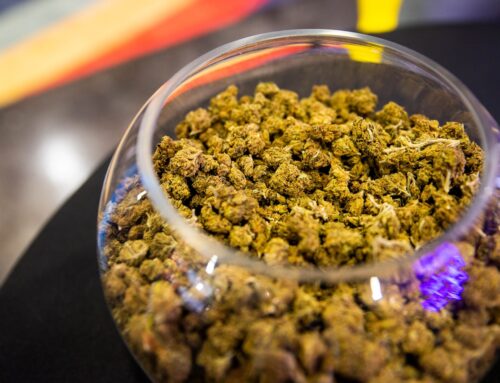Scientists Discover New Cannabis Compound With ‘Remarkable Antioxidant And Skin Anti-Infla
October 3, 2025
A new cannabis compound that appears to have “remarkable antioxidant and skin anti-inflammatory” properties has been discovered by scientists.
The isolated cannabinoid, classified as cannabizetol (CBGD), shows promise for the expanding base of knowledge regarding the therapeutic and medicinal potential of the marijuana plant.
Cannabizetol is formed when two cannabinoid molecules bind together with a methylene bridge, the researchers explained in a new paper. Aside from its promising medical findings, cannabizetol is also one of the rare compounds in a class known as dimeric cannabinoids, one of only four dimeric molecules currently identified in cannabis.
“We demonstrate that cannabizetol exhibits remarkable antioxidant and skin anti-inflammatory activity, significantly higher than that observed for the known dimeric cannabinoid cannabitwinol,” the study says.
“These results highlight cannabizetol as a promising bioactive metabolite with potential dermatological applications.”
The Italian and Swiss authors, writing in the September 2025 issue of the peer-reviewed Journal of Natural Products, said their results “suggest that among the many still unknown cannabinoids there are also methylene-bridged dimers of other cannabinoids, including dimers composed of two different cannabinoids, with potential biological activities of great interest.”
“The synthesis of analytical standards could be useful in facilitating the identification of these compounds in cannabis extracts,” they wrote—adding that “natural dimeric compounds are of considerable importance, as they enable further exploration of chemical space, potentially leading to novel biological activities beyond those of their respective monomers.”
The researchers used a number of inflammatory genes to test against CBGD. After a six-hour treatment, “the anti-inflammatory activity of the molecules was evaluated on 84 inflammatory genes using an RT-PCR array (RT2 Profiler PCR Array Human Inflammatory Cytokines and Receptors, QIAGEN S.r.l., Hilden, Germany), as previously described” they wrote.
The chemists examined NF-κB, a molecular pathway that seems to serve as a master switch for inflammation, given the prolific nature of its impact across a wide range of cells that lead to the condition. Cannabinzetol appeared to show significant potential to inhibiting inflammation.
“Several cannabinoids have demonstrated biological activities, making Cannabis sativa particularly attractive as a source of potential medicinal active principles,” they noted.
This study comes as the sophistication of testing equipment in the past decades has significantly increased, allowing scientists to study an ever growing array of cannabinoids. The number of known cannabinoids is over 100, though many require further study to characterize them.
“The significant biological activity of these dimeric cannabinoids prompted us to optimize the synthetic approach by exploiting the flow chemistry technology,” the authors wrote.
Growing on past research, this study is groundbreaking. The primary intoxicating compound in the marijuana plant, well known to the public, is THC, isolated and discovered by an Israeli scientist in 1964. It wasn’t until the 1990s that the endocannabinoid system was identified in rats and humans. Building on that knowledge, chemists isolated other compounds with potential therapeutic effect, including cannabigerol and cannabinol. This comes as a cascading flow of new research on cannabinoids are classified.
Scientists reported in May 2025 that they identified 33 “significant markers” in the cannabis genome that “significantly influence cannabinoid production”—a finding they say promises to drive the development of new plant varieties with specific cannabinoid profiles.
Additionally, researchers announced in April 2025 that they successfully identified a new cannabinoid—cannabielsoxa—produced by the marijuana plant as well as a number of other compounds “reported for the first time from the flowers of C. sativa.” The team of government and university researchers out of South Korea also evaluated 11 compounds in cannabis for antitumor effects in neuroblastoma cells, finding that seven “revealed strong inhibitory activity.”
Search
RECENT PRESS RELEASES
Related Post





